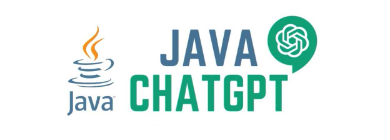Income Tax Dept releases FAQs on new Income Tax Bill, 2025: Check details
The Income Tax Department has released frequently asked questions (FAQs) about the new Income Tax Bill, 2025. The FAQs are released to give tax experts and common man abiut why the new Income Tax Bill is being brought, what has changed in the new Income Tax Bill and what remains unchanged. The FAQs will also help taxpayers to understand how big the current Income Tax Act is and how new Income Tax Bill simplifies it.Frequently Asked Questions (FAQs) about Income Tax Bill, 2025
Q1 When was the current Income-tax Act passed?
Ans: The current Income-tax Act was enacted in 1961 and came into existence with effect from 01.04.1962. It has been amended nearly 65 times with more than 4000 amendments, year on year through Finance Acts, based on the evolving requirements of modifications in taxation policy.Q2 Why does the new Bill still contain 536 sections and 2.6 lakh words?
Ans: While the existing Income-tax Act contains 298 numbered sections, effective sections in the current Act are 819. This is because other than numeric section numbers there are large number of sections with alpha-numeric codes such as 115A to 115WM (117 sections) and so on. The Income-tax Act not only deals with levy of tax but it is a comprehensive document, which encompasses all aspects of tax administration. It also includes other aspects such as:(a) laying down the administrative framework, assigning roles and responsibilities for assessing officers, taxpayers, tax deductors, and professionals etc;
(b) setting out the framework for income determination, timelines, appellate procedures, enforcement, assessments, and penalties; and
(c) taking into account the impact of interpretations on economic policy, affecting both domestic and international investments.
The new Bill proposes 536 sections to meet the above-mentioned requirements. Further, several sections in the new Bill exist primarily to honour the commitments under the existing tax regime, including provisions relating to Minimum Alternate Tax (MAT), various deductions and exemptions, etc. These provisions will remain in force until their respective sunset clauses take effect. Therefore, these are required to be part of new Bill to ensure a smooth transition, while maintaining legal and policy continuity.
Q3 Whether the simplification exercise has led to no ‘material’ change?
Ans: The simplification exercise, inter-alia, encompasses following aspects: i. Redundant provisions of the Income tax Act have been removed; ii. Sub-sections and clauses have been used, instead of relying on provisos and explanations for exceptions and carve-outs; iii. Simplified system for cross referencing of sections, sub-sections, clauses etc has been used; iv. Extensive use of tables, formulae for enhanced clarity; v. Consolidation of provisions scattered across various sections/ Chapters relating to a single issue; etc Since there have been regular amendments to the Income Tax Act, 1961 including amendments proposed in Finance Bill, 2025, the Act stands updated from policy perspective. All amendments proposed upto Finance Bill 2025 have been duly incorporated in the new Income tax bill 2025. Therefore, while no major policy related changes have been made in the Bill, the above aspects have led to proposed ‘material’ changes in the existing law.
Q4 What concerns have been raised regarding the Income-tax Act 1961?
Ans: Tax administrators, practitioners and taxpayers have acknowledged the contribution of the Income-tax Act, 1961 in overall tax governance and economy. However, over the time concerns have also been expressed over the accumulation of amendments, the intricate language, detailed provisions, redundancies and the heavy structure of the Income-tax Act.Q5 What are the reasons for regular amendments in the Income Tax Act as against other Acts?
Ans: The Income-tax Act is dynamic legislation requiring regular updating and amendments to reflect the nation’s changing economic, social, and political realities. Criminal and other civil laws do not undergo such frequent updating and amendments whereas the Income-tax Act is regularly updated (on annual basis) to reflect the economic changes, fiscal policies, and government priorities. It, therefore, adapts to changes in the economy, business environments, inflation rates, income sources, and global financial trends.The government has introduced tax reforms to encourage specific sectors of the economy while balancing the same with requirements of revenue collection and widening/deepening of the tax base. Given its direct link to taxation and economic conditions, the Act needs to be more adaptable to reflect shifting economic policies, changing incomes, inflation, and emerging industries. The dynamic nature of the Income-tax Act provides it flexibility to accommodate new economic trends.
Examples:
- To promote exports, specific provisions such as 80HH, 80HHC were brought into the statute. The same having served intended purpose have been since omitted or made inapplicable after sun set date.
- To promote infrastructure development, section 80IA was brought into Income-tax Act, 1961.
- Sections 80HHE, 10A and 10AA were introduced for facilitating software exports.
- Section 80IAC is yet another example of encouraging the start-ups.
Q6 Why has the Income-tax Act 1961, become bulky over time?
Ans: The income tax law has become increasingly bulky over time, with its traditional style of drafting and numerous amendments. The complexity of language in the present Act is a product of different factors. To keep pace with certain legal pronouncements, explanations and provisos were often inserted to clarify legislative intent. Changing taxation priorities also led to introduction of additional text to an otherwise simple provision.Further, certain provisions remained in the statute, despite becoming non-operational, in view of pending claims/issues from earlier years.
Q7 What simplification efforts have been made in the past?
Ans: Attempts have been made in the past, including those in 2009 and 2019 for simplification of the Income tax Act. The recommendations from these efforts, as regards policy, have been considered in the amendments carried out from time to timeQ8 Has the present simplification exercise considered international experience of other countries who have undertaken similar exercise?
Ans: Simplification of tax laws has received attention globally. Countries have undertaken similar exercises to enhance clarity and compliance in their taxation laws. In the UK, the process was carried out during the period 1994 to 2010 for simplifying the language. Before simplification, the UK Income and Corporation Tax Act, 1988 comprised 960 pages. However, after simplification, it was divided into five separate Acts, with their page counts increased, resulting in a more segmented but overall larger body of tax law.Similarly, Australia underwent a similar process during 1994 to 1997, where simplification of language also resulted in a longer tax code. These international experiences emphasize the delicate balance between simplification and the need for clear, unambiguous legal language. Drawing from these lessons, effort has been made to focus not just on linguistic simplification but also on structural rationalization.
Q9 How does the new Bill compare to the Income-tax Act, 1961 in terms of numbers of Chapters, sections and words?
Ans: There has been a significant reduction in the text of new Bill, in comparison to the existing Income Tax Act, as summarised below.| Particulars | Income-tax Act, 1961 | The proposed Act |
| Chapter | 47 | 23 |
| Section | 819* | 536 |
| Words | 5.12 lakh | 2.6 lakh |
Besides about 1200 Provisos and 900 Explanations have been removed
Chartered Accountant Janhavi Pandit, "The Government has released the General FAQs on the broad scope of New Income tax Bill. It has explained what has changed in new Bill for certain class of taxpayers. For example, in current 1961 Act, the provisions relating to non-profit organisations are scattered at various sections and chapters like section 10, section 11 to 13, section 80G, section 115. The proposed new Bill has brought all provisions in single part XVII - B that deals with registration, income, compliances, violations etc. This is a welcome change and will certainly enhance user-friendliness."
This story originally appeared on: India Times - Author:Faqs of Insurances


























































